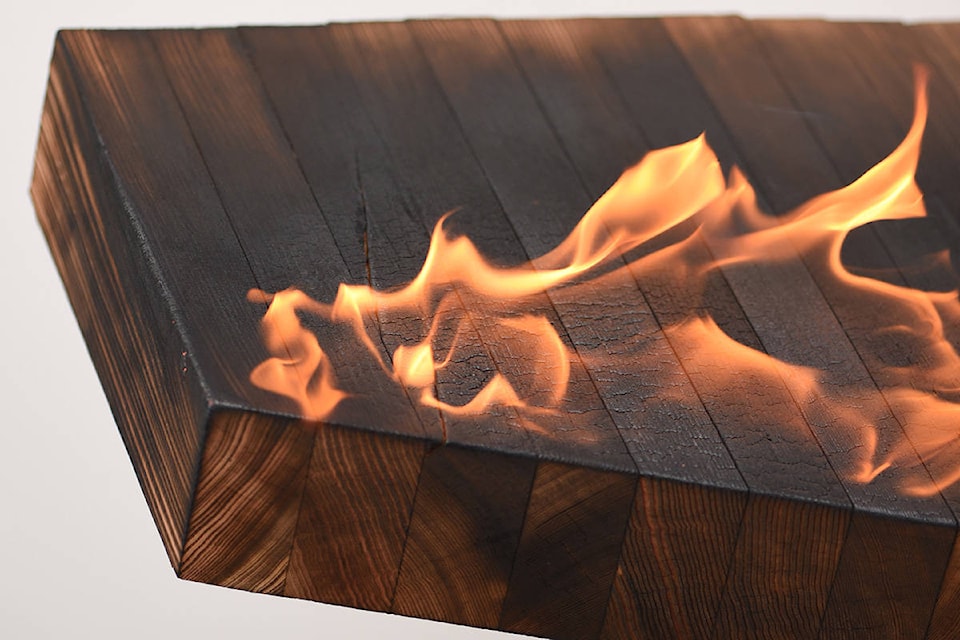Black is a complex colour. It’s mysterious, seductive, elegant and powerful, but it can also allude to fear, grief, death and aggression — it’s a moody colour in the scheme of home design and it needs to handled with care.
Black is also a member of the neutral colour palette, alongside its less polarized siblings: white, gray and taupe — a selection of colours which have been so prevalent in interior design for the last decade, it’s almost not surprising to see black arriving fashionably late to the party.
Black has been used in interior design for centuries, but what makes its reemergence interesting is the extent of its use in design. Black colour-play has gotten much bolder in the home, and nothing illustrates this better than the emergence of Shou Sugi Ban, the ancient Japanese technique of charring wood black.
A look at history helps understand the emergence of black in design. In the mid 1600s the renowned Dutch artist Rembrandt was experiencing a wave of commercial success, largely based in portrait work for display in private homes. Rembrandt was an expert in using dark backgrounds in order to contrast and accentuate the main subject of his work. The use of dark backgrounds successfully harmonized with light colours, creating a truly striking union.
Today, we are seeing that same outstanding union on a much larger scale. Black walls, ceilings, floors and home exteriors are becoming prevalent and showcasing the colour’s better attributes as a sophisticated shade that we don’t need to fear. While broad use of black offers spaces a unique and revolutionary depth, the current design-era is rooted in texture and natural elements, which is why Shou Sugi Ban has made an epic return to the scene.
“It’s terrific — it raises the grain in a really pleasant way so that there is a very tactile quality to the wood. If you run your fingers along it you can feel all the delicate edges, the years and history of the wood,” says Karen Smith, realtor with Royal LePage Parksville-Qualicum Beach Realty.
Karen and her husband David experimented with Shou Sugi Ban in several focal points in their home, including a beam at the front entrance and as part of a kitchen island.
Shou Sugi Ban uses fire to char wood black. Centuries ago, Japanese carpenters scoured the coastline for driftwood to use in design, liking its distinctive finish and durability. (Driftwood undergoes an aggressive weathering process as it is thrashed about in the erratic oceanic elements.) Desire for driftwood flourished, ultimately depleting its availability in ancient-day Japan.
So the Japanese experimented with the second most powerful natural weathering process: fire. The charring method acted as an effective preservative while enhancing the aesthetic character of the wood.
| Shou Sugi Ban is the ancient Japanese technique of charring wood. (Don Denton/Boulevard) |
“It preserves the wood without using chemicals — it’s an ecological alternative,” Karen explains. “We wanted to try a hand at that technique to see what sort of finish and colouration we could get on the wood. It feels more organic and alive than stained and sealed wood.”
The practice of Shou Sugi Ban gained popularity in Japan throughout the 1700s and remained common practice until 50 years ago, when it gave way to modern building materials.
However, as is the somewhat predictable evolutionary process of fashion and interior design, everything that was once old becomes new again in the great circle of design life. The Japanese reintroduced Shou Sugi Ban and in our incredibly connected, global world, the technique gained momentum and spread like fire throughout Europe and North America.
In early 2005, Kirk Van Ludwig was on an architectural tour in Big Sur where he was first introduced to Shou Sugi Ban.
A renowned furniture designer, Kirk is owner of Victoria’s own Autonomous Furniture — now one of Vancouver Island’s most notable retailers of one-of-a-kind Shou Sugi Ban pieces.
“We started torching our furniture from day one; it’s always been a staple for us. In 2016, there was a big shift towards black in all elements of the home, and the torched look has very much followed,” Kirk explains.
Autonomous Furniture pieces are billed as the collision of natural elements presented with modern sophistication. Every piece of wood in the shop has a history and a story, and Kirk knows each of them. Kirk designs his furniture to feature the natural beauty and lifecycle of wood.
“The approach in our furniture has always been to make the wood appear very natural — how you would find it in the forest. Forests light on fire and what’s left is torched wood. We don’t incorporate stains, everything is natural,” says Kirk.
Self-taught in the art of designing and creating masterful furniture, Kirk is also self-taught in the art of Shou Sugi Ban.
“I made my mistakes and now we have our proprietary method,” Kirk smiles, relinquishing neither his great methodology or the tales of things gone terribly wrong.
What he does divulge, is that the wood is torched and washed repeatedly until it reaches the depth of black desired, and then natural oil is applied.
Wood is introduced into the home in an effort to flush a space with that desirable, holistic, natural warmth. Shou Sugi Ban uses the familiar warmth of wood to effectively control the moody nature of the colour black in design, while dramatically showcasing its more attractive qualities.
Shou Sugi Ban has returned, and is arguably the design element that will trail-blaze a path for black on its way to becoming this era’s monarch of interior design.
- Story by Chelsea Forman/Photographs by Don Denton/Boulevard Magazine
Story courtesy of , a Black Press Media publication
Like Boulevard Magazine on and follow them on



